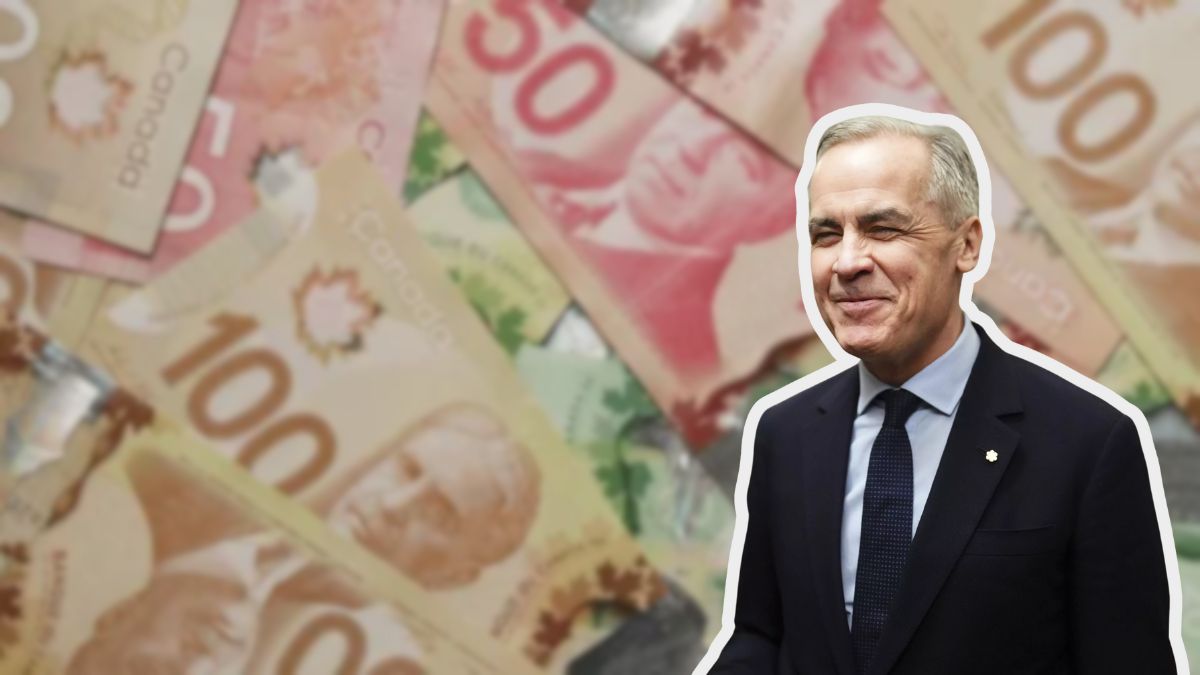As households across Canada continue to feel the sting of high living expenses, the federal government has approved a one-time \$250 rebate to provide timely relief. Officially confirmed on July 11, 2025, the measure will be distributed by the Canada Revenue Agency (CRA) starting July 15, 2025.
The rebate is targeted at low- and middle-income Canadians, especially those already receiving benefits like the GST/HST credit or the Guaranteed Income Supplement (GIS). By directing support to the most vulnerable groups, Ottawa hopes to ease the immediate financial burden of inflation and soaring energy costs during peak summer months.
This article provides a complete breakdown of the eligibility rules, payment schedule, CRA process, and the broader purpose behind the initiative.
Who Qualifies for the \$250 Rebate?
Not all Canadians will receive this payment, but eligibility is straightforward. The CRA is relying on 2024 tax returns to determine who gets the benefit, ensuring the system uses the most recent income data.
Core Eligibility Groups
- Single Canadians with an annual income under \$45,000
- Families with a combined household income below \$65,000
- GST/HST credit recipients as of July 2025
- Seniors receiving the Guaranteed Income Supplement (GIS)
- Canadians with disabilities or those living on fixed incomes
Importance of Tax Filing
Those who have not yet filed their 2024 tax return are at risk of missing out. Filing ensures that income and eligibility are officially recognized by the CRA’s system. Without this, payments cannot be issued automatically.
Timeline for the \$250 Rebate
The CRA has confirmed an expedited payment schedule. Deposits will begin flowing within days of the government’s approval.
| Detail | Information |
|---|---|
| Rebate Amount | \$250 (one-time) |
| Approval Date | July 11, 2025 |
| Deposit Start Date | July 15, 2025 |
| Administered By | Canada Revenue Agency (CRA) |
| Eligibility Basis | 2024 tax return & GST/HST credit status |
Direct Deposits vs Cheques
- Direct deposit recipients will see payments starting July 15, 2025.
- Paper cheques will follow, typically taking 7 to 10 business days to arrive by mail.
For faster access, Canadians are encouraged to enroll in direct deposit via the CRA portal.
How to Check If You’re Eligible
The CRA has simplified the process for Canadians to verify their eligibility status.
Steps to Check Online
- Log in to your CRA My Account.
- Navigate to the “Benefits and Credits” section.
- Look for the \$250 rebate entry in your account summary.
- Confirm that your direct deposit details are current.
If your financial circumstances changed significantly in 2024 but are not yet reflected in your file, you may need to call the CRA for a manual review.
Why the \$250 Rebate Matters
The federal government has labeled this rebate as part of its broader affordability strategy. While not branded under a single program, it aligns with Energy Relief 2025, a set of federal and provincial measures designed to offset rising energy bills and seasonal expenses.
Key Policy Goals
- Offset higher summer energy costs, including air conditioning and electricity use.
- Provide immediate, one-time assistance during peak inflationary pressures.
- Complement existing provincial programs such as Ontario’s Hydro One rebate and Alberta’s Utility Bill Credit.
For many households, the rebate may cover a portion of utility bills, groceries, or school-related costs, providing short-term breathing room.
CRA Action Steps for Canadians
For those wondering what needs to be done to secure the payment, here’s a simple checklist:
- File your 2024 taxes if you haven’t already. This ensures the CRA has accurate income data.
- Log into your CRA My Account to confirm eligibility status.
- Update banking details if your account information has changed.
- Monitor direct deposits around July 15 or check your mail for cheques later.
Importantly, no separate application is required. If you meet the eligibility rules, the CRA will process payments automatically.
The Bigger Picture: Why \$250, Why Now?
The rebate arrives at a critical time. Inflation, while easing slightly compared to past years, continues to push energy bills and essential goods higher. Summer months typically see spikes in electricity usage as households rely on cooling systems, adding strain to already tight budgets.
This measure also reflects the government’s recognition that previous supports like the GST top-up and carbon rebates provided temporary relief but did not fully offset current pressures. By targeting low- and middle-income households again, Ottawa is directing funds where they can have the greatest immediate impact.
Comparison With Other Support Programs
To understand the significance of the \$250 rebate, it helps to see how it fits alongside existing federal supports:
| Program | Amount | Frequency | Target Group |
|---|---|---|---|
| GST/HST Credit | Varies by income | Quarterly | Low- to middle-income households |
| Canada Child Benefit (CCB) | Up to \$619 per child/month | Monthly | Families with children under 18 |
| Carbon Rebate (Climate Action Incentive) | \$250–\$500 depending on province | Quarterly | All residents in participating provinces |
| \$250 Rebate (July 2025) | \$250 | One-time | GST/HST & GIS recipients, low-income earners |
The rebate is smaller in scale but timed strategically during summer, aligning with household spending spikes.
Potential Challenges and Criticisms
While the payment will be welcomed by many, critics highlight several limitations:
- One-time only: At just \$250, the rebate may be insufficient to offset sustained inflation.
- Missed recipients: Canadians who have not filed taxes may fall through the cracks.
- Not universal: Higher-income Canadians receive no benefit, though some argue broader relief would help middle-class households struggling in expensive cities.
Despite these concerns, the rebate is widely viewed as a symbolic yet practical step toward helping the most financially vulnerable.
How Canadians Plan to Use the Rebate
Interviews and surveys suggest that most recipients intend to put the \$250 directly toward essentials. Common uses include:
- Paying utility bills during peak summer months.
- Covering part of grocery expenses.
- Offsetting back-to-school costs in August.
- Contributing to rent or debt payments.
For low-income seniors on fixed pensions, the rebate provides a modest but crucial buffer against ongoing cost increases.
Federal Messaging: Relief, Not a Solution
Government officials have framed the \$250 rebate as short-term support, not a long-term affordability fix. They stress that this payment is part of a package of relief measures, alongside provincial programs, tax credits, and other benefits.
The broader debate over Canada’s affordability crisis—including housing, wages, and pensions—remains unresolved. But for households struggling in July 2025, the rebate offers immediate relief.
Conclusion: A Timely Boost for Struggling Canadians
The \$250 rebate represents a focused intervention at a time when Canadians need it most. By targeting low- and middle-income households, seniors, and those on fixed incomes, the CRA ensures that assistance reaches those least able to absorb inflation and energy spikes.
With payments set to begin July 15, 2025, Canadians are urged to check their CRA accounts, update direct deposit details, and ensure their taxes are filed. While it may not solve the larger affordability challenges, the rebate delivers a timely cushion for households navigating a difficult economic climate.
5 SEO-Friendly FAQs
Q1: Who is eligible for the \$250 rebate in July 2025?
Single Canadians earning under \$45,000, families under \$65,000, GST/HST credit recipients, seniors on GIS, and some Canadians with disabilities.
Q2: When will the \$250 rebate be paid?
Direct deposits begin July 15, 2025. Paper cheques may take 7–10 business days to arrive.
Q3: Do I need to apply for the rebate?
No. If you qualify based on your 2024 tax return, the CRA will process your payment automatically.
Q4: How can I check if I qualify?
Log into your CRA My Account, go to “Benefits and Credits,” and look for the \$250 rebate entry.
Q5: What is the purpose of the \$250 rebate?
It is meant to offset higher summer energy costs and inflation pressures, providing short-term relief to low- and middle-income Canadians.










